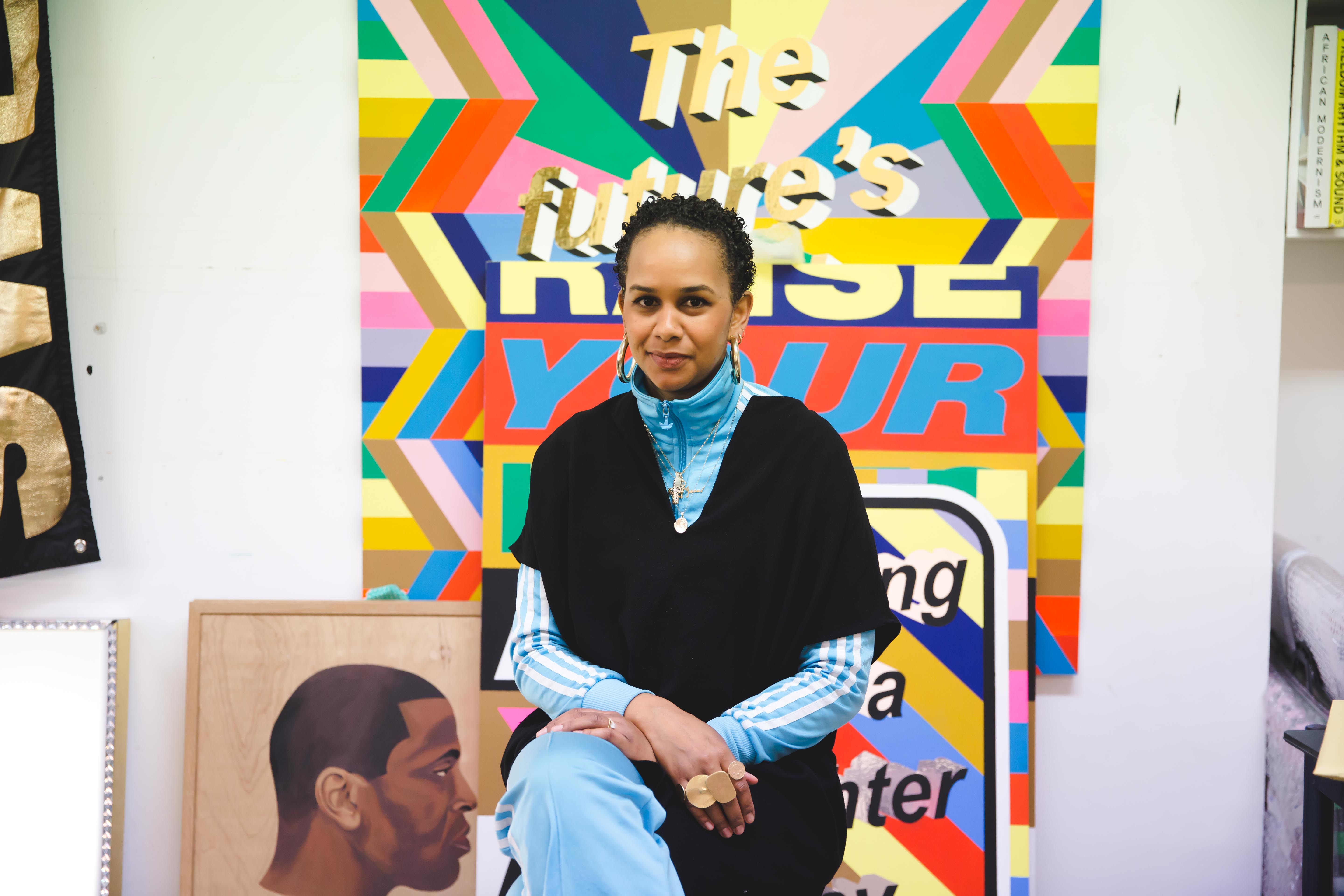G-IRL
Lakwena Maciver


Transforming one cityscape at a time, East London-based artist Lakwena Maciver’s work is unparalleled in ambition and impact. Her intensely coloured, large-scale, graphic design-inspired murals have taken over the streets of London, New York and Miami with hopeful affirmations and striking colour-schemes. Whether it’s London’s Southbank, a youth detention centre in Arkansas or her own studio work, the ideas behind her practice are undeniably progressive and empowering. Much more powerful than just ‘feel good’ messaging – her ideas are rooted in Afrofuturism, spirituality and heritage. In person, Lakwena is as radiant and wholehearted as her artwork. She exudes a calm assuredness that is a blessing to encounter and her distinctive voice and presence is what so many people are drawn to. With community, people and representation at the heart of what she does, she is a much-needed figure in the contemporary British art scene. Spending the morning in her charismatic studio above Ridley Road Market in Dalston, we talked to the esteemed artist about the importance of murals in communities of colour, imposter syndrome, and why saying yes has always taken her to the next level.
How do your ideas manifest?
All of this – the murals, the paintings, the drawings – is really one whole body of work that leads on from one piece to another. It all began with this book I read called Echoes of Eden, which talks about this idea of paradise and how it pops up in a lot of cultures. This idea of heaven. All of my work has kind of flowed from that. It’s about the future.
In terms of materials and process, is it difficult or straight-forward producing work that exists outside?
I generally use household paint that is weather proof. But interestingly, one of the first walls I did in Miami, I used gold spray paint and the text read ‘I remember paradise’. The gold paint weathered, but it was nice because I was trying to comment on this sense of loss. I remember once I saw this advert made from litmus paper. It was blue and slowly turned red to show the acidy of the rain. I’m really interested in the layers of meaning in material. That’s why a collaboration I did with womenswear designer Phillipa Long was interesting. It was really exciting for me because of the nature of fabric. It’s more delicate than a flat wall. I always want to be pushing what I am doing and stretching myself.
I studied graphic design, but ended up becoming an artist. I guess I felt limited by just making work for people. The way I was taught was very conceptual. My ideas didn’t need to be in a printed format so I ended up making these really massive paintings and that became the direction I eventually went in. I also started out painting signs in Borough Market. It was a hard job! It was a very masculine environment, but it paid better than other jobs I was doing at the time. Initially, the idea of being an artist never made sense to me. When I was young, I would do drawings for other kids in my school and people would say, ‘you should be an artist when you grow up’ but I’d say, ‘artists don’t make a lot of money’. This is when I was 9-years old! [Laughs]. Money was always an important thing in my family. I always wanted to be an accountant to make money but in secondary school, everything changed. I had an epiphany and I decided I wanted to do what I loved and become an artist but via graphic design because graphic design offered a tangible way of making money. I couldn’t have just gone to art school. I wouldn’t have known what to do! My parents aren’t artists but graphic design was my route into art. Also, that understanding of visual communication is useful to what I do. Words are really important to me.